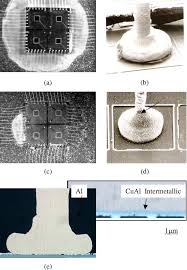Read MCU PIC18F2510 Program
Read MCU PIC18F2510 Program from flash memory and copy the Microcontroller PIC18F2510 content to the new MCUs after breaking microcontroller PIC18F2510 memory security fuse bit;

This family offers the advantages of all PIC18 microcontrollers – namely, high computational performance at an economical price – with the addition of high-endurance, Flash program memory. On top of these features, the PIC18F2X1X/4X1X family introduces design enhancements that make these microcontrollers a logical choice for many high-performance, power sensitive applications.
All of the devices in the PIC18F2X1X/4X1X family incorporate a range of features that can significantly reduce power consumption during operation. Key items include:
· Alternate Run Modes: By clocking the controller from the Timer1 source or the internal oscillator block, power consumption during code execution can be reduced by as much as 90% if read microcontroller pic16f876 flash.
· Multiple Idle Modes: The controller can also run with its CPU core disabled but the peripherals still active. In these states, power consumption can be reduced even further, to as little as 4% of normal operation requirements.
· On-the-fly Mode Switching: The power managed modes are invoked by user code during operation, allowing the user to incorporate power-saving ideas into their application’s software design.
· Lower Consumption in Key Modules: The power requirements for both Timer1 and the Watchdog Timer have been minimized. See Section 25.0 “Electrical Characteristics” for values.
All of the devices in the PIC18F2X1X/4X1X family offer ten different oscillator options, allowing users a wide range of choices in developing application hardware after Read MCU.
These include:
· Four Crystal modes, using crystals or ceramic resonators
· Two External Clock modes, offering the option of using two pins (oscillator input and a divide-by-4 clock output) or one pin (oscillator input, with the second pin reassigned as general I/O)
· Two External RC Oscillator modes with the same pin options as the External Clock modes if crack pic12c672 MCU hex
· An internal oscillator block which provides an 8 MHz clock and an INTRC source (approximately 31 kHz), as well as a range of 6 user selectable clock frequencies, between 125 kHz to 4 MHz, for a total of 8 clock frequencies.
This option frees the two oscillator pins for use as additional general purpose I/O.
· A Phase Lock Loop (PLL) frequency multiplier, available to both the high-speed crystal and internal oscillator modes, which allows clock speeds of up to 40 MHz. Used with the internal oscillator, the PLL gives users a complete selection of clock speeds, from 31 kHz to 32 MHz – all without using an external crystal or clock circuit.
Besides its availability as a clock source, the internal oscillator block provides a stable reference source that gives the family additional features for robust operation:
· Fail-Safe Clock Monitor: This option constantly monitors the main clock source against a reference signal provided by the internal oscillator. If a clock failure occurs, the controller is switched to the internal oscillator block, allowing for continued low-speed operation or a safe application shutdown.
· Two-Speed Start-up: This option allows the internal oscillator to serve as the clock source from Power-on Reset, or wake-up from Sleep mode, until the primary clock source is available.
Tags: odemknout čip code,odemknout ic archive,odemknout integrovaný obvod flash,odemknout mcu dump,odemknout mikrokontrolér eeprom,rozlousknout čip bin,rozlousknout ic hex,rozlousknout integrovaný obvod program,rozlousknout mcu software,rozlousknout mikrokontrolér firmware

